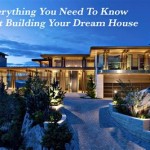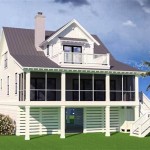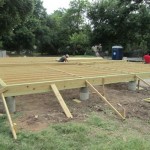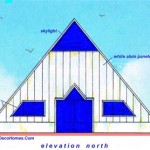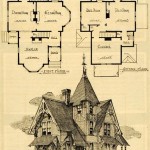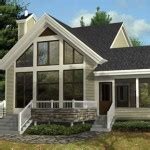House plan designing is the process of creating a detailed drawing or blueprint of a building, specifically a house. It involves planning the layout of rooms, walls, windows, doors, and other structural elements, as well as specifying the materials and construction methods to be used. House plans are essential for obtaining building permits and guiding the construction process.
A well-designed house plan can maximize space utilization, enhance natural lighting and ventilation, and create a comfortable and functional living environment. It considers factors such as the number of occupants, their lifestyle, and the size and shape of the building site. Architects and designers use specialized software to create house plans that meet specific building codes and aesthetic requirements.
In the following sections, we will explore the key principles of house plan designing, different types of house plans, and the importance of energy efficiency and sustainability in modern house design.
House plan designing involves several important considerations, including:
- Space planning
- Layout optimization
- Energy efficiency
- Building codes
- Material selection
- Construction methods
- Sustainability
- Aesthetics
These factors work together to create a functional, comfortable, and visually appealing living space.
Space planning
Space planning is the process of determining the size, shape, and arrangement of rooms and other spaces within a building. It involves understanding the needs of the occupants, the intended use of each space, and the overall flow and circulation throughout the building.
Effective space planning can maximize space utilization, create a sense of flow and openness, and provide for the privacy and comfort of the occupants. It considers factors such as the number of occupants, their lifestyle, and the size and shape of the building site.
Architects and designers use space planning techniques to create floor plans that meet the specific requirements of each project. They may consider the use of different room shapes, such as rectangles, squares, or L-shapes, to optimize space and create interesting visual effects. They may also use partitions, walls, or other elements to divide spaces and create a sense of privacy or separation.
Space planning is an iterative process that involves considering various design options and making adjustments to achieve the best possible layout. It requires careful attention to detail and a deep understanding of the principles of design and human behavior.
Layout optimization
Layout optimization in house plan designing refers to the arrangement of rooms and spaces within a building to maximize functionality, comfort, and aesthetics. It involves considering the flow of movement, the relationship between different spaces, and the overall efficiency of the layout.
Effective layout optimization can create a sense of spaciousness, even in small homes, and can make a house feel more comfortable and inviting. It can also improve the energy efficiency of a home by reducing the need for artificial lighting and heating or cooling.
There are several key principles of layout optimization that architects and designers follow:
- Create a logical flow of movement: The layout should allow for easy and efficient movement between different rooms and spaces. This means avoiding unnecessary hallways or bottlenecks and ensuring that the most frequently used spaces are easily accessible.
- Maximize natural light: Windows and other openings should be placed strategically to allow for ample natural light to enter the home. This can reduce the need for artificial lighting and create a more comfortable and inviting atmosphere.
- Define spaces clearly: Different spaces within the home should have a clear purpose and be defined by their use. For example, the living room should be designed for relaxation and entertaining, while the kitchen should be designed for cooking and dining.
- Create a sense of balance: The layout should create a sense of balance and harmony. This can be achieved by using symmetrical or asymmetrical design elements, and by ensuring that the different spaces within the home flow together well.
Layout optimization is an important aspect of house plan designing that can have a significant impact on the overall functionality, comfort, and aesthetics of a home. By following these principles, architects and designers can create homes that are both beautiful and livable.
Energy efficiency
Energy efficiency in house plan designing refers to the practice of creating homes that consume less energy. This can be achieved through a variety of design strategies, including:
- Building envelope optimization: The building envelope refers to the exterior walls, roof, and foundation of a home. Optimizing the building envelope can reduce heat loss and gain, which can lead to significant energy savings. This can be achieved through measures such as increasing insulation levels, using energy-efficient windows and doors, and sealing air leaks.
- Passive solar design: Passive solar design involves orienting a home to take advantage of the sun’s energy for heating and cooling. This can be achieved through the use of large south-facing windows, thermal mass to store heat, and overhangs to shade windows from the sun in the summer. Passive solar design can reduce the need for artificial heating and cooling, leading to energy savings.
- Energy-efficient appliances and systems: The appliances and systems used in a home can also have a significant impact on energy consumption. Choosing energy-efficient appliances, such as ENERGY STAR-rated appliances, can help to reduce energy use. Additionally, installing energy-efficient systems, such as high-efficiency HVAC systems and water heaters, can also lead to energy savings.
- Renewable energy sources: Renewable energy sources, such as solar panels and geothermal heat pumps, can be used to generate electricity and heat for a home. Incorporating renewable energy sources into a house plan can reduce reliance on fossil fuels and lead to significant energy savings over time.
By incorporating energy-efficient design strategies into house plans, architects and designers can create homes that are comfortable, affordable to operate, and environmentally friendly.
In addition to the strategies listed above, there are a number of other factors that can affect the energy efficiency of a home, including:
- Climate: The climate in which a home is located can have a significant impact on its energy consumption. Homes in cold climates will typically require more energy for heating, while homes in hot climates will typically require more energy for cooling.
- Size and shape: The size and shape of a home can also affect its energy efficiency. Larger homes will typically require more energy to heat and cool than smaller homes. Additionally, homes with complex shapes can be more difficult to insulate and seal, which can lead to energy loss.
- Occupancy: The number of people living in a home can also affect its energy consumption. Homes with more occupants will typically require more energy for heating, cooling, and other purposes.
By considering all of these factors, architects and designers can create house plans that are tailored to the specific needs of each project and that maximize energy efficiency.
Building codes
Building codes are regulations that govern the design, construction, and alteration of buildings. They are in place to ensure the safety, health, and welfare of the occupants of buildings, as well as the general public.
Building codes are typically developed by local governments, but they can also be developed by state or federal governments. The requirements of building codes can vary depending on the jurisdiction, but they typically address the following areas:
- Structural safety: Building codes ensure that buildings are designed and constructed to withstand the forces that they will be subjected to, such as wind, snow, and earthquakes.
- Fire safety: Building codes require the use of fire-resistant materials and construction methods to minimize the risk of fire and its spread.
- Health and sanitation: Building codes ensure that buildings have adequate ventilation, lighting, and sanitation to protect the health of the occupants.
- Accessibility: Building codes require that buildings are accessible to people with disabilities.
House plan designers must comply with all applicable building codes when designing house plans. This ensures that the homes that are built are safe, healthy, and accessible for the occupants.
In addition to the requirements listed above, building codes may also address other issues, such as:
- Energy efficiency: Building codes may require the use of energy-efficient materials and construction methods to reduce energy consumption.
- Sustainability: Building codes may encourage or require the use of sustainable materials and construction methods to reduce the environmental impact of buildings.
- Historical preservation: Building codes may have special requirements for the preservation of historic buildings.
Building codes are an essential part of the house plan design process. By complying with building codes, house plan designers can help to ensure that the homes that are built are safe, healthy, and sustainable.
Material selection
The selection of materials for a house plan is an important decision that can have a significant impact on the cost, durability, and sustainability of the home. There are a wide variety of materials available for use in house construction, each with its own unique advantages and disadvantages.
Some of the most common materials used in house construction include:
- Wood: Wood is a traditional building material that is still widely used today. It is relatively inexpensive, easy to work with, and can be used to create a variety of different styles of homes. However, wood is also susceptible to fire, rot, and insects, so it is important to take steps to protect it from these elements.
- Concrete: Concrete is a strong and durable material that is often used for foundations, walls, and floors. It is fire-resistant and can withstand extreme weather conditions. However, concrete is also relatively expensive and can be difficult to work with.
- Brick: Brick is another durable material that is often used for exterior walls. It is fire-resistant and can withstand extreme weather conditions. However, brick is also relatively expensive and can be difficult to work with.
- Steel: Steel is a strong and durable material that is often used for structural framing. It is fire-resistant and can withstand extreme weather conditions. However, steel is also relatively expensive and can be difficult to work with.
- Glass: Glass is a transparent material that is often used for windows, doors, and skylights. It allows natural light to enter the home and can create a sense of openness. However, glass is also relatively fragile and can be expensive to install.
When selecting materials for a house plan, it is important to consider the following factors:
- Cost: The cost of materials is a major factor to consider when building a home. Some materials, such as wood and concrete, are relatively inexpensive, while others, such as steel and glass, are more expensive.
- Durability: The durability of materials is another important factor to consider. Some materials, such as concrete and brick, are very durable and can withstand extreme weather conditions. Other materials, such as wood and glass, are less durable and may require more maintenance.
- Sustainability: The sustainability of materials is also an important factor to consider. Some materials, such as wood and recycled materials, are more sustainable than others. Other materials, such as concrete and steel, have a higher environmental impact.
- Aesthetics: The aesthetics of materials is also an important factor to consider. Some materials, such as wood and brick, have a classic look that can be appealing to many people. Other materials, such as steel and glass, have a more modern look that may be appealing to others.
By considering all of these factors, homeowners can make informed decisions about the materials to use in their house plans.
In addition to the factors listed above, there are a number of other factors that can affect the material selection process, including:
- Location: The location of a home can affect the availability and cost of materials. For example, homes in coastal areas may have to use materials that are resistant to salt water corrosion.
- Climate: The climate in which a home is located can also affect the material selection process. For example, homes in cold climates may have to use materials that are resistant to cold temperatures and snow.
- Personal preferences: The personal preferences of the homeowner can also affect the material selection process. For example, some homeowners may prefer to use natural materials, while others may prefer to use more modern materials.
By considering all of these factors, homeowners can make informed decisions about the materials to use in their house plans.
Construction methods
The construction method used for a house will have a significant impact on the cost, durability, and sustainability of the home. There are a wide variety of construction methods available, each with its own unique advantages and disadvantages.
Some of the most common construction methods used for houses include:
- Stick framing: Stick framing is a traditional construction method that involves building the frame of the house out of individual pieces of wood. Stick framing is relatively inexpensive and easy to do, but it can be time-consuming.
- Platform framing: Platform framing is a newer construction method that involves building the frame of the house on a platform. Platform framing is faster and easier than stick framing, but it can be more expensive.
- Log cabin construction: Log cabin construction is a traditional method of building a house using logs. Log cabin construction is very durable and can be very energy-efficient, but it can be time-consuming and expensive.
- Masonry construction: Masonry construction involves building the walls of the house out of brick, stone, or concrete blocks. Masonry construction is very durable and fire-resistant, but it can be expensive and time-consuming.
- Steel framing: Steel framing involves building the frame of the house out of steel beams and columns. Steel framing is very strong and durable, but it can be expensive.
When choosing a construction method for a house, it is important to consider the following factors:
- Cost: The cost of the construction method is a major factor to consider when building a home. Some construction methods, such as stick framing and platform framing, are relatively inexpensive, while others, such as masonry construction and steel framing, are more expensive.
- Durability: The durability of the construction method is another important factor to consider. Some construction methods, such as masonry construction and steel framing, are very durable and can withstand extreme weather conditions. Other construction methods, such as stick framing and platform framing, are less durable and may require more maintenance.
- Sustainability: The sustainability of the construction method is also an important factor to consider. Some construction methods, such as using recycled materials and energy-efficient techniques, are more sustainable than others. Other construction methods, such as using concrete and steel, have a higher environmental impact.
- Aesthetics: The aesthetics of the construction method is also an important factor to consider. Some construction methods, such as log cabin construction and masonry construction, have a classic look that can be appealing to many people. Other construction methods, such as steel framing, have a more modern look that may be appealing to others.
By considering all of these factors, homeowners can make informed decisions about the construction method to use for their house plans.
In addition to the factors listed above, there are a number of other factors that can affect the construction method selection process, including:
- Location: The location of a home can affect the availability and cost of construction materials and labor. For example, homes in remote areas may have to use different construction methods than homes in urban areas.
- Climate: The climate in which a home is located can also affect the construction method selection process. For example, homes in cold climates may have to use different construction methods than homes in warm climates.
- Personal preferences: The personal preferences of the homeowner can also affect the construction method selection process. For example, some homeowners may prefer to use traditional construction methods, while others may prefer to use more modern construction methods.
By considering all of these factors, homeowners can make informed decisions about the construction method to use for their house plans.
Sustainability
Sustainability is an important consideration in house plan designing, as it can help to reduce the environmental impact of a home and make it more comfortable and affordable to live in.
There are a number of ways to incorporate sustainability into house plans, including:
- Using sustainable materials: Sustainable materials are materials that are produced in a way that minimizes their environmental impact. They include recycled materials, renewable materials, and materials that are produced locally.
- Designing for energy efficiency: Energy-efficient homes use less energy to heat, cool, and operate, which can reduce greenhouse gas emissions and save money on energy bills. Energy-efficient design strategies include using insulation, energy-efficient appliances, and passive solar design.
- Designing for water efficiency: Water-efficient homes use less water, which can reduce strain on local water resources and save money on water bills. Water-efficient design strategies include using low-flow fixtures, rainwater harvesting systems, and drought-tolerant landscaping.
- Designing for indoor environmental quality: Indoor environmental quality refers to the quality of the air and other environmental factors inside a home. Good indoor environmental quality can improve health and well-being, and it can be achieved through the use of natural ventilation, low-VOC (volatile organic compound) materials, and other strategies.
By incorporating sustainability into house plans, homeowners can create homes that are more environmentally friendly, comfortable, and affordable to live in.
Aesthetics
Aesthetics is an important consideration in house plan designing, as it can have a significant impact on the overall look and feel of a home. When designing a house plan, it is important to consider the following aesthetic factors:
- Architectural style: The architectural style of a home is one of the most important aesthetic considerations. There are many different architectural styles to choose from, each with its own unique characteristics. Some of the most popular architectural styles include traditional, modern, and contemporary.
- Exterior finishes: The exterior finishes of a home can also have a significant impact on its overall aesthetic. Exterior finishes include siding, roofing, and trim. There are many different types of exterior finishes available, each with its own unique look and feel.
- Landscape design: The landscape design of a home can also contribute to its overall aesthetic. Landscape design includes the planting of trees, shrubs, and flowers, as well as the design of walkways, patios, and other outdoor features. Good landscape design can enhance the beauty of a home and make it more inviting.
- Interior design: The interior design of a home is also an important aesthetic consideration. Interior design includes the selection of furniture, fabrics, and other decorative elements. Good interior design can create a home that is both beautiful and functional.
By considering all of these aesthetic factors, homeowners can create house plans that are both beautiful and functional. A well-designed home is a joy to live in and can be a source of pride for the homeowner.









Related Posts

